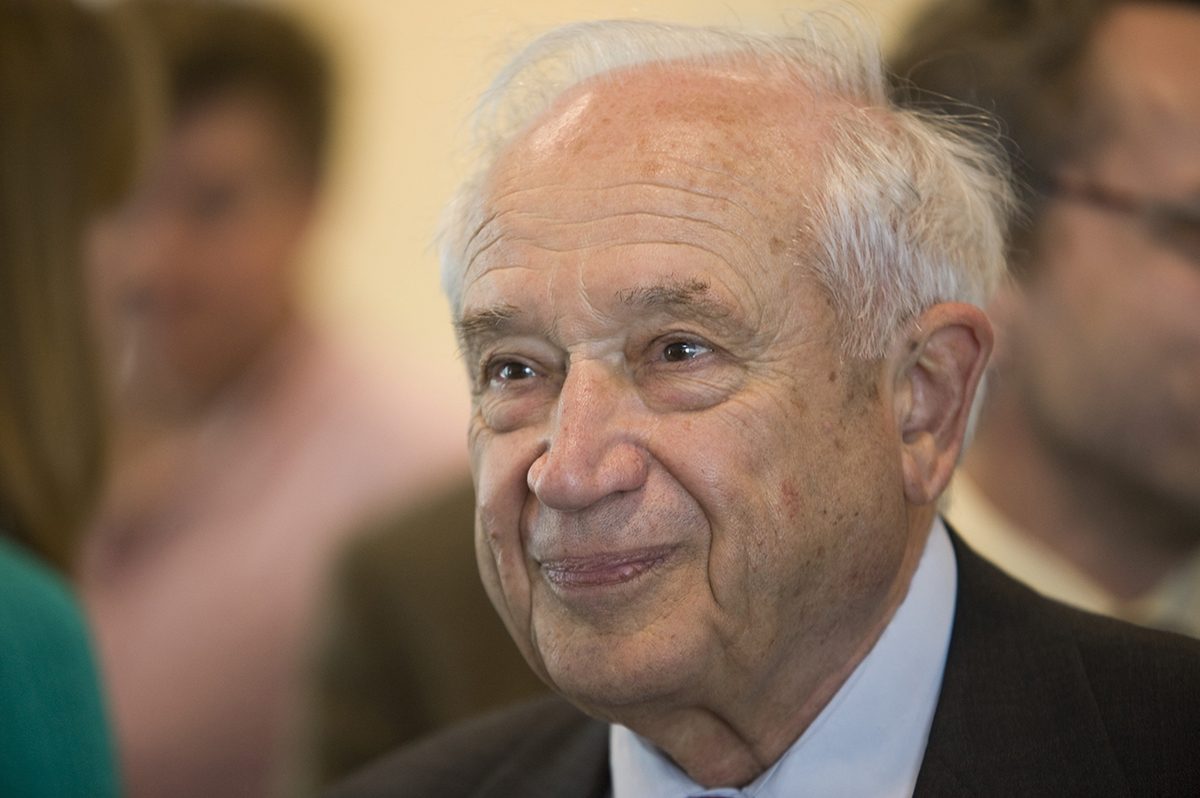
I was fortunate to cross paths with Raphael Mechoulam, “the father of cannabis research,” at several science conferences over the years. The most memorable occasion was the 22nd annual meeting of the International Cannabinoid Research Society (ICRS) in Freiburg, Germany, in July 2012. Mechoulam delivered a plenary speech at the symposium, addressing the future of cannabinoid research and key areas of study that should be pursued.
It was exactly fifty years earlier, in 1962, when Mechoulam launched his scientific investigation into the chemistry of cannabis. In 1963, he and Yuval Shvo first reported the molecular structure of cannabidiol (CBD). And the following year Mechoulam coauthored a paper that elucidated the molecular structure of tetrahydrocannabinol (THC). Although he didn’t know it at the time, Mechoulam had lit a slow burning fuse that would detonate a revolution in medical science.
As a young scientist, Mechoulam set out to understand how cannabis works; he ended up unlocking a treasure trove of information about how we work. Known affectionately as “Raphi” to many of the scientists he mentored, Mechoulam tirelessly promoted cooperation between researchers around the world to advance the study of the body’s “endocannabinoid system,” which produces chemicals similar to THC, CBD, and other plant cannabinoids, and mediates their effects.
In 1992, Mechoulam’s research group at Hebrew University in Jerusalem discovered an endogenous THC-like compound that activates receptors in the mammalian brain. He named it “anandamide,” the bliss molecule. And in 1995, Mechoulam and his team identified a second endocannabinoid compound, 2-arachidonoyglycerol or 2-AG for short. Anandamide and 2-AG are part of an internal lipid neurotransmitter system that regulates a wide range of physiological processes, including appetite, mood, pain perception, and immune function.
“Planning Research for the Next Half Century”
“It’s time to plan ahead for the next half a century,” Mechoulam, age 81, told the Freiburg ICRS attendees, who had gathered to honor his 50 years as a pioneer cannabis scientist. Mechoulam cited three specific areas that should be research priorities: CBD, the CB2 cannabinoid receptor, and a cluster of endogenous fatty acid compounds in the brain that he referred to as FAAA’s.
Keep in mind that this was in 2012, when CBD was virtually unknown to the general public. But it was already a hot topic among ICRS scientists who were probing the compound’s anti-inflammatory, antioxidant, anticonvulsant, anti-tumoral, neuroprotective, and analgesic properties. The preclinical science was truly jaw-dropping, and Mechoulam envisioned a wide array of therapeutic applications for CBD and its derivatives. But clinical studies of plant cannabinoids were lagging because of strict drug laws in the United States and elsewhere.
THC directly activates both cannabinoid receptor subtypes – CB1 and CB2. However, when THC binds to CB2, it does not trigger the psychoactive high that cannabis is known for because CB2 receptors are not concentrated in the brain. THC binding to CB1, the abundant central nervous system receptor, causes the intoxicating effect. Consequently, researchers set their sights on healing without the high by experimenting with drugs that stimulate the CB2 receptor – while bypassing CB1 in the brain.
CB2 receptors are present throughout the immune system, the peripheral nervous system, metabolic tissue, skin cells, and in many internal organs. Aberrant CB2 signaling is implicated in a raft of autoimmune, neurodegenerative, metabolic, and psychiatric disorders. This makes modulating CB2 an attractive target for drug development and therapeutic intervention.
A Cluster of FAAA’s
Mechoulam was particularly excited about the third area of research – the FAAA’s – which comprise a cluster of fatty acid compounds in the brain. Little is known about “the chemistry of the human personality” or the innate biochemical variations that that may account for individual differences in temperament, he explained, adding: “Accumulation of such knowledge is essential for a future biochemical basis of psychology.”
If specific chemical differences “are the cause, or one of the causes, of the differences in personalities,” then it’s essential “to look for a large ‘catalog’ of compounds, which cause central nervous system effects,” Mechoulam asserted. “The variability of such a cluster of compounds – their levels, their ratios and presumably their effects, not only as individual compounds, but also as a group” (a type of entourage effect) could result in “an infinite number of individual differences.”
Mechoulam drew attention to the importance of several dozen endocannabinoid-like lipids and other FAAA’s, which include various fatty acid amides of amino acids (and their derivatives, such as ethanol amides) or fatty acid esters with glycerol and related compounds. A partial list of these compounds had been identified and analyzed by Heather Bradshaw’s group at the University of Indiana. Some of these compounds were “evaluated for their biological effects,” Mechoulam noted. “Amongst them are anandamide, 2-AG, NADA, palmitoyl ethanolamide (PEA), oleoyl ethanolamide (OEA), stearoyl ethanolamide, and a few others,” whose individual effects vary considerably, but “the joint effects of groups of these components … have not been evaluated.”
Mechoulam and his colleagues looked closely at “oleoyl serine,” which is anti-osteoporotic, but is also found in the brain. “Arachidonoyl serine,” another endogenous lipid compound of interest, “lowers damage caused by closed head injury.” And he observed that “oleoyl glycine” and PEA concentrations are enhanced after damage in a specific brain region. These studies gave rise to the concept of the “endocannabinoidome” – an expanded endocannabinoid system that encompasses a plethora of fatty acid neurotransmitters in addition to anandamide and 2-AG.
“It is tempting to assume,” Mechoulam concluded, “that the huge possible variability of the levels and ratios of substances in such a cluster of compounds may allow an infinite number of individual differences, the raw substance which of course is sculpted by experience. If this intellectual speculation is shown to have some factual basis it may lead to major advances in molecular psychology.”
Martin A. Lee is the director of Project CBD. He’s authored and edited several books, including Smoke Signals, Acid Dreams, and The Essential Guide to CBD. Copyright, Project CBD. May not be reprinted without permission.






